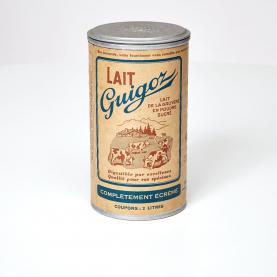Dehydration
Water in food is relatively available, which means it may or may not bond with other molecules. Removing water from food by drying it slows down the growth of microorganisms and thus ensures that the food is well preserved. Among the various techniques used, the air drying process is particularly suitable for fish and meat. Modern techniques, such as spray-drying and freeze-drying, are used to reduce different liquids to powder form.
Drying, using natural elements
People have always had to find ways of preserving and storing food to have enough to eat during between seasons or harvests. Drying is one of the oldest methods of preserving food. The sun and dry, fresh air are probably the first means that human beings used to help them preserve their food temporarily. In prehistoric times, they exposed cereal grains, berries, nuts and fruit to the sun before storing them. They originally dried meat and fish outdoors, in the sunshine or shade, and then noticed that warm air currents sped up the process.
Drying liquids: A real challenge
Water is essential for life and is the main component of living beings. It is relatively available, either bonded with other molecules or not, and can promote the growth of microorganisms. By removing the water in food, drying slows down the growth of microorganisms as well as other reactions leading to deterioration.
Drying may be achieved by outdoor evaporation, vacuum drying, warm air drying, freeze-drying or boiling. Industry uses tall drying towers to convert liquid products into powder through a process called spray-drying. The liquid is atomised into tiny droplets using an atomisation system. The droplets are then dried in a current of hot air.
The most amazing process uses cold air for drying. This process is called freeze-drying as, first of all, the liquid or solid food is frozen. The ice is then sublimed, moving directly from a solid state to a gaseous state, and finally the water vapour is removed using a vacuum. It is the best process for maintaining the quality of food.
Drying, longer storage, less bulky and lighter
Modern techniques do not just aim to preserve products but also make them convenient to reconstitute instantly in water or easier to transport and store.
Freeze-drying is a particularly popular technique used for preparing food for astronauts and for any other extreme activity because it greatly reduces the weight of food and preserves flavour well. It is especially suitable for drying herbs, mushrooms and some types of vegetables. Although freeze-drying is a very expensive process, instant coffee is one of the most common freeze-dried products.
Milk is a fragile and highly perishable foodstuff, so it has to be transformed quickly to be preserved. By turning it into powder, it can be kept for months, which is a significant advantage. In powdered form, milk withstands transportation and storage very well, especially in hot countries.
Freeze-drying in Inca times
The technique developed by the Incas for preserving a variety of potato and transforming it into chuño, is in fact an ancestral form of freeze-drying. Day after day, the tubers are exposed to the actions of the ice, then the sun. Eventually they lose all of their water and can therefore be kept for many months, or years even.
ROUX, Jean-L, 1994. Conserver les aliments. Lavoisier Tec Doc
PAULI 1996. Technologie culinaire. Editions professionnelles Philip Pauli, 3ème édition.
TOUSSAINT-SAMAT, Maguelone, ALBERNY, Renaud, HORMAN Ian ,1991. 2 millions d’années d’industrie alimentaires, Nestec S.A.














